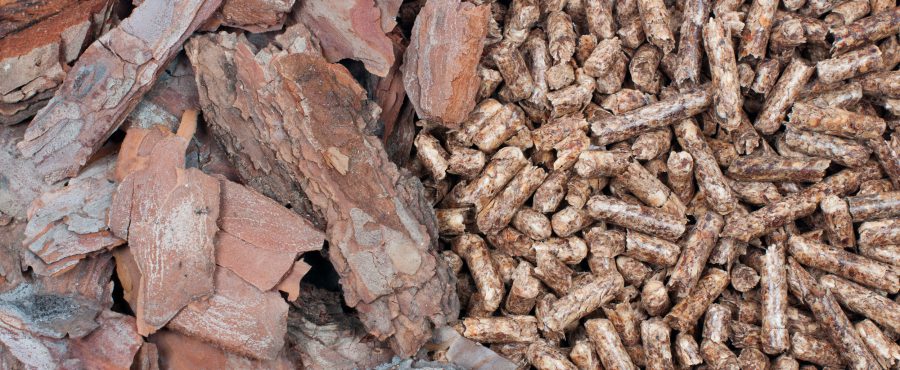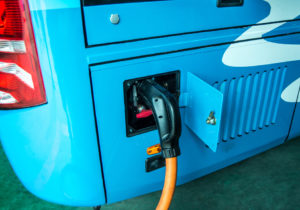
Biomass is one of the oldest sources of renewable energy in the world – for hundreds of years humans have been burning wood to keep themselves warm. In the Polish reality it is now one of the most prospective directions of development of renewable energy sources (RES).
EU regulations impose an obligation to reach, in 2020, in the entire Union, the target of 20 per cent final energy consumption from RES. Despite there is less and less time, many states have still not yet achieved a satisfactory value. The average for the entire Union in 2016 totalled 17 per cent. Although there are states like Sweden, with the result of 53.8 per cent and Malta, where 6 per cent of final energy consumption comes from renewable sources. Poland has reached the value of 11.3 per cent.
Tonnes of tree oil
To be able to compare energy amounts coming from various energy sources, the unit applied is the tonne of oil equivalent, or TOE. This is the energy equivalent of a tonne of crude oil with the heating value of 10,000 kcal per kilogram. An effective comparison of efficient different energy sources often requires such values like a million tonnes of oil equivalent (Mtoe).
Eurostat data show that the Polish achievement of 11.3 per cent of energy from renewable sources corresponds to 9 Mtoe, of which 6.41 Mtoe (71.2 per cent) comes from biomass.
Biomass may be used both as heating fuel in households and in larger installations, such as thermal power stations or heat and power stations. It may be used in the only fuel but also in the co-burnt with coal, although this method is questioned for multiple reasons and current regulations make it less and less popular. An example of a system burning only biomass is the so called “green block”, generating the power of 225 MW, of the power plant in PołaniecI)http://energetyka.wnp.pl/w-polancu-ruszyl-najwiekszy-na-swiecie-zielony-blok,199158_1_0_0.html.
Opportunities for biomass
In Poland biomass has a development potential that should not be underestimated. Though we are a country with a strong agricultural sector, one may hardly speak of good soil quality situation. The most fertile chernozems (1st valuation class) cover 0.75 per cent of the countryII)http://www.itp.edu.pl/wydawnictwo/woda/zeszyt_28_2009/artykuly/Sklodowski%20Bielska.pdf. In comparison, in Ukraine this is approximately 25 per cent of the countryIII)http://www.fao.org/3/a-i3905e.pdf.
In Poland 40 per cent of soils have the 4th valuation class, 23 per cent falls to classes 3 and 4. Class 6 soil amounts to 11 per cent. This situation may be beneficial to the producers of high-energy plants such as poplar or basket willow – these trees may grow on soils which are not very good for food production and do not require high-quality soils.
Biomass may also be obtained from forest waste (branches, chips) and production waste (sawdust), agricultural waste (fruit leftovers from juice pressing, hay, straw) and from rubbish. Although, agricultural and forest production produce biomass, they are frequently treated as waste and not used at all. Once freed, this potential could very much improve profitability of biomass energy generation.
An opportunity for biomass is also the long-term EU policy and the growing coal prices. When power plants run on fossil fuels, the total cost will include the cost of fuel and CO2 emission fees, which are to be growing. At the same time, the price of biomass will be counterbalanced by income from green certificatesIV)https://powermeetings.eu/konferencja/forum-biomasy/wp-content/uploads/sites/19/2017/04/06-Rafal-Domaszewski-Enea.pdf.
Though biomass burning generates CO2 but one must remember that during the growing process, the plants grasped this same carbon dioxide from the atmosphere.
Threats to biomass development
The main threat to the development of biomass energy in Poland is the lack of understanding of and support for this activity from state administration. This type of fuel is the most successful as a local energy source. Transportation over longer distances is costly and also generates emissions. Powering the green block of Połaniec heating and power plant requires importing of 57 per cent of the used fuelV)https://powermeetings.eu/konferencja/forum-biomasy/wp-content/uploads/sites/19/2017/04/06-Rafal-Domaszewski-Enea.pdf, which means extra costs. However, well-designed development of the biomass energy sector, may have some invigorating impact on the local market and manufacturers and support broadly understood entrepreneurship. The most effective biomass-based energy model is using it in local heating plants, in small towns or even neighbourhoods. However, in Poland there is no support for the development of such heating system models.
There is also no systemic support for those institutions which intend to generate biomass-based energy. As the prices of green certificates are dropping, heating and power plants no longer find it profitable to participate in co-burning projects or invest into green blocks.
Another challenge is long-term competition between production of high-energy plants with production for the food market. Farmers focus on their economic interest and might simply be not interested in production for the power industry as they will earn more for producing food than wood.
Summary
In Poland biomass is a prospective source of green energy. What is necessary, however, is systemic support that would increase profitability and an approach that would contribute to the building of local logistic chains connecting producers and recipients. This, though, requires a wider vision which, if non-existent, may constitute the basic barrier for the development of biomass within the forthcoming years.
| I. | ↑ | http://energetyka.wnp.pl/w-polancu-ruszyl-najwiekszy-na-swiecie-zielony-blok,199158_1_0_0.html |
| II. | ↑ | http://www.itp.edu.pl/wydawnictwo/woda/zeszyt_28_2009/artykuly/Sklodowski%20Bielska.pdf |
| III. | ↑ | http://www.fao.org/3/a-i3905e.pdf |
| IV, V. | ↑ | https://powermeetings.eu/konferencja/forum-biomasy/wp-content/uploads/sites/19/2017/04/06-Rafal-Domaszewski-Enea.pdf |




